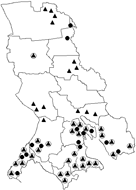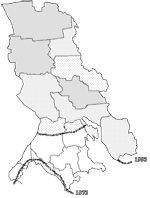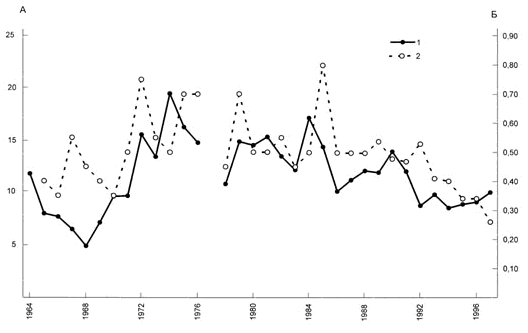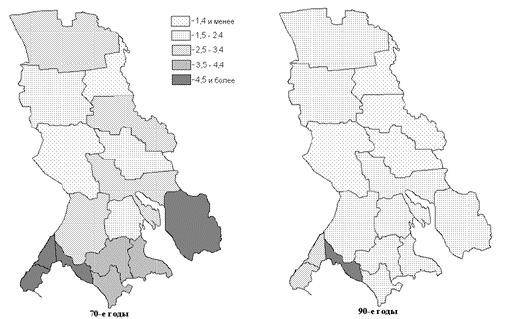
Fig. 1. European wild boar distribution and roe deer occurrences in Republic of Karelia (from Danilov, 1979 with additions)
Neither can we apply the term aboriginal to European wild boar which appeared in Karelia in the late 1960's-early 70's as a result of natural expansion, or roe deer which occasionally visits southern areas of the republic (fig. 1)

Fig. 2. Distribution and relative abundance of wolverine in Karelia, tracks in 10 km of the route (from Danilov, 1994)
However, the closest relationship between the abundance dynamics of predator and prey is demonstrated by lynx and Alpine hare (fig. 4). The reason for this is that hare is the main prey for lynx in the Russian European North. The period of predator abundance fluctuations is 9-10 years, which is the same as for Alpine hare.

Fig. 4. Changes in the abundance of Alpine hare (1) and lynx (2) in Karelia (from Danilov et al., 1998)
Fig. 4. Changes in the abundance of Alpine hare (1) and lynx (2) in Karelia (from Danilov et al., 1998)
Study of the population dynamics, commercial management and protection patterns demonstrated that the reduction in reindeer abundance observed in the last decade was due to skyrocketing illegal hunting. Combined effect of anthropogenic and natural factors on elk population, such as legal and illegal hunting (10 and 7% of the total abundance, respectively), killing by large predators - wolf (6-7%) and bear (3-5%) caused a dramatic decrease in elk abundance in Karelia and adjacent areas of the European North (fig. 5).

Fig. 5. Elk distribution and abundance in Karelia, tracks in 10 km of the route (from Danilov et al., 1996 with additions)
Fig. 5. Elk distribution and abundance in Karelia, tracks in 10 km of the route (from Danilov et al., 1996 with additions)
Measures are taken to preserve and restore the abundance of these species, including hunting control, protection measures, organization of specialized temporary reserves.
P.I. Danilov, V.V. Belkin, A.V. Yakimov, L.V. Bliudnik, V.A. Markovsky
